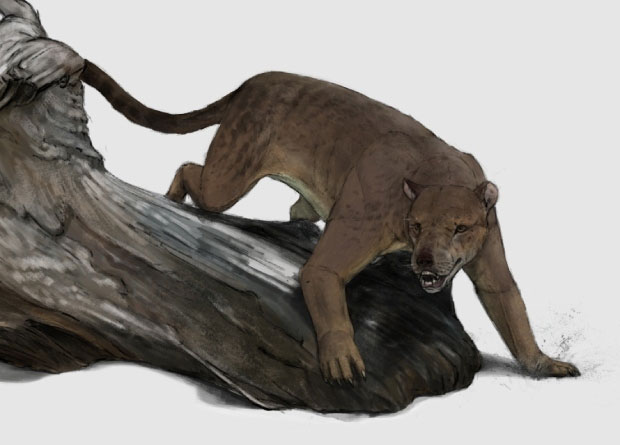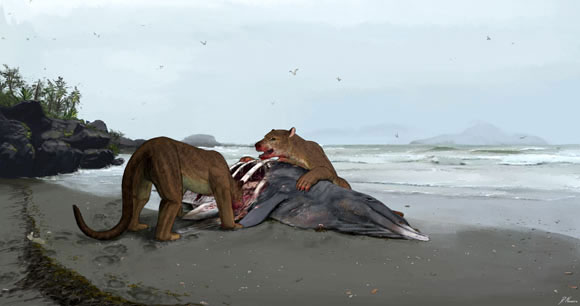A bizarre and dangerous carnivorous beast roamed the land of France 12 million years ago, resembling a giant bear-dog hybrid.
According to Sci-News, the newly identified species is named Tartarocyon cazanavei, belonging to the Amphicyonid group, family Amphicyonidae, representing one of the characteristic carnivorous groups of ancient Europe.


The giant bear-dog hunting a large animal on the coast of France 12 million years ago – (Photo: DENNY NAVARRA)
The strange appearance has led this group of creatures to be colloquially referred to as bear-dogs or bear-dog hybrids, as they resemble a perfect hybrid between a brown bear and a large dog. This group of mammals is completely extinct, leaving no descendants on Earth.
The fossil that helped identify this new species is a lower jawbone recovered from marine sediments in Sallepisse, located in the Pyrénées-Atlantiques region of France.
According to Dr. Bastien Mennecart, a paleontologist from the Natural History Museum of Basel (Switzerland), this previously unknown creature stands out due to its teeth.
“Unlike familiar Amphicyonids, this animal has a unique fourth premolar tooth below. This tooth is particularly important for identifying the species and genus,” Dr. Mennecart stated.
This creature lived at the northern edge of the Pyrenees Mountains around 12 to 12.8 million years ago, a period during which mammal fossils are very rare in the region. The animal’s body size could reach up to 320 kg when fully grown.
This new species also provides a unique opportunity for scientists to fully explore the evolution of bear-dog species in Europe based on the context of known environmental events.
The research was recently published online in PeerJ.


















































